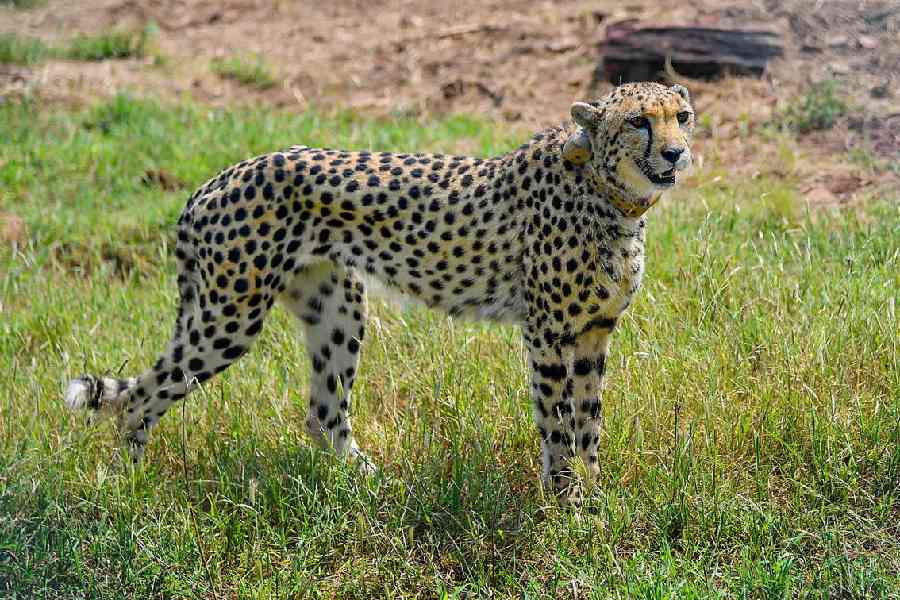Video images showing a cheetah allegedly roaming near a polytechnic college on the outskirts of Sheopur, Madhya Pradesh, that emerged on Sunday have prompted sections of wildlife scientists to question the viability of India’s cheetah introduction project again.
The images, circulating on social media and shown on some TV channels, purportedly show a cheetah released by wildlife authorities in the Kuno National Park, moving close to a village and the polytechnic college near Sheopur, about 60km away from Kuno’s core area.
India had flown in eight cheetahs from Namibia in September 2022 and 12 more from South Africa in February 2023 in a project that seeks to establish cheetah population in the open wilderness.
But the project has encountered multiple setbacks — unexpected deaths of adults and cubs born in Kuno — and most of the surviving 12 adults and 12 cubs have remained behind large fenced enclosures with very little time in the open wild.
Sections of wildlife biologists had questioned the viability of the project in 2022, pointing out that cheetah behaviour studies in Africa show that cheetahs require far more land than is available within Kuno and predicting that cheetahs, when released from the fenced enclosures, would move into human-dominated landscapes.
The video images of the cheetah near Sheopur that emerged on Sunday purportedly show one of the two cheetahs released by Madhya Pradesh forest authorities into the open wild on December 4.
“This shouldn’t surprise anyone,” said Ravi Chellam, a big cat specialist and coordinator with the Biodiversity Collaborative, a network of conservation scientists, and one of the scientists who has since 2022 questioned the manner in which the cheetah project has been implemented. “The cheetahs are behaving the way they do. Wide-ranging cats will go on exploratory forays, which can stretch into hundreds of kilometres.”
Two queries sent by this newspaper to the Union environment ministry seeking verification and information about the alleged sighting of a cheetah near Sheopur have not elicited a response. But an official speaking on the condition of anonymity said there was “no need to hype” such a sighting.
“Cheetahs will explore the territory around them, even if a cheetah has approached Sheopur, it’ll come back,” the official said.
Chellam and other wildlife researchers from India, Iran, Kenya, South Africa and the Netherlands had cautioned in October 2022 that the plan to introduce cheetahs in India was “an ill-advised conservation attempt” that hinged on an “unsubstantiated claim” that the country had sufficient and suitable space to host cheetahs.
Government wildlife scientists who have pushed the project have consistently argued that Kuno has an abundance of prey — chital, chinkara, wild pig, nilgai and monkeys — that makes it a suitable site for introducing cheetahs.
But Chellam and other project critics have pointed to the long-term captivity of the cheetahs within fenced enclosures in Kuno as a sign of the challenges of introducing cheetahs there that even project managers are recognising now.











